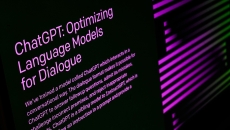Quality and Safety
ECRI, the patient safety organization, has published its annual list of the 10 health technology hazards it's watching in 2024.
Further guidance is needed to protect patients from "sycophantic" genAI documentation outputs that influence medical decisions, and researchers are asking the FDA "to clarify its oversight before summarization becomes a part of routine patient care."
AI & ML Intelligence
There's too little focus on governance, patient preferences and workforce needs among leaders seeking to implement generative AI, according to a new Deloitte survey of 60 healthcare executives.
Nursing and IT
The nursing-oriented remote patient monitoring approach also prevents more than 500 falls each month at the Minnesota health system. And it's improved staffing ratios – sometimes dramatically, depending on patient acuity.
PA Navigate will refer patients to services in their communities that address their gaps in social determinants of health, including food, shelter and transportation.
In a short time online, organizations can capture more patient concerns, reduce more open cases and improve staff experiences, say Alpa Vyas of Stanford Healthcare and Dr. Adrienne Boissy of Qualtrics and the Cleveland Clinic.
The new Infrastructure Adoption Model is designed to help health systems link their IT deployments to their clinical and business goals and help them reduce costs, mitigate cyber risk and boost outcomes for both patients and clinicians.
Also, eHealth NSW has finally hired a new CTO.
Lisa Jarrett, an artificial intelligence expert at PointClickCare, previews her HIMSS24 session that will dive into AI topics including transparency, fairness, explainability and transparency.
Dr. Yaa Kumah-Crystal of VUMC previews her HIMSS24 panel session, where she'll spotlight some of the most promising AI use cases. "We must be thoughtful about the implications during this exploratory phase."









